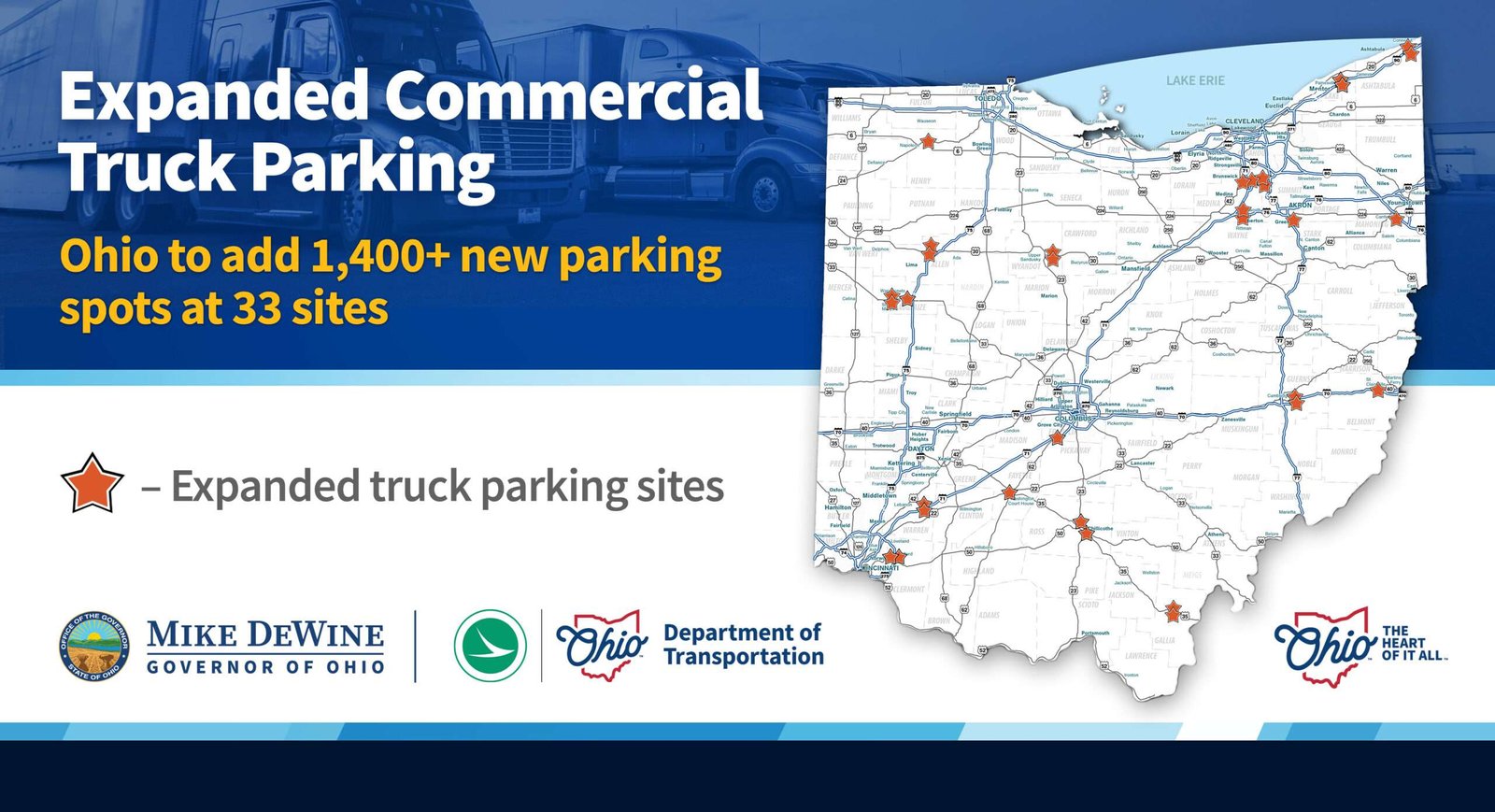
PRESS RELEASE – Ohio Governor Mike DeWine and Ohio Department of Transportation (ODOT) Director Pamela Boratyn today announced details of a new plan to address the shortage of safe, accessible commercial-truck parking in Ohio by adding at least 1,400 new truck parking spaces across the state.
Following an extensive review of ODOT property, Ohio has identified 33 sites in 19 counties where long-term truck parking lots will be created or expanded, more than doubling current truck parking capacity at ODOT-maintained sites.
“As Ohio’s economy continues to grow, so do the number of trucks traveling on Ohio’s network of interstates and state routes,” said Governor DeWine.
“By expanding safe, accessible places for drivers to rest, we’re supporting the people who keep our economy moving and making it safer for everyone on our roads.”
Perfectly situated within a day’s drive of 60% of the U.S. and Canadian population, Ohio is one of America’s most critical freight corridors. In 2023 alone, trucks logged 27.5 million miles on Ohio roads, and ODOT estimates that freight volume will increase 26% by 2045.
The 33 new truck parking areas will be located in Allen, Ashland, Ashtabula, Auglaize, Belmont, Clermont, Fayette, Franklin, Gallia, Guernsey, Henry, Lake, Mahoning, Medina, Ross, Summit, Warren, and Wyandot counties. Once complete, the American Transportation Research Institute projects that Ohio will lead the nation in the total number of long-term truck parking spaces available on state-owned property.
“Ohio’s new truck parking plan is a major step forward in improving safety for truck drivers and everyone on the road,” said ODOT Director Pamela Boratyn.
“These projects will make our state a national leader in total truck parking capacity—setting the standard for safety and service.”
According to the American Trucking Associations, there is one truck parking space for every 11 trucks on the road in the United States, forcing truck drivers who can’t find a spot to drive drowsy or pull over to sleep in unsafe areas such as highway shoulders and entrance/exit ramps.
A total of 689 crashes were caused by drowsy semi-truck drivers in Ohio since 2015, resulting in 345 injuries and two fatalities.
Ohio’s commercial-truck parking plan is funded with $150 million from the current transportation budget which was passed by the Ohio General Assembly and signed by Governor DeWine earlier this year. Construction is scheduled to begin in 2026, with all work expected to be complete by the end of 2027.
Each site will include lighting and restroom facilities to support driver safety and comfort.
The parking expansion is part of a continued push by the DeWine Administration to support freight mobility, bolster economic competitiveness, and improve highway safety.
Other initiatives include:
-2019: Launch of a Truck Parking Information Management System (TPIMS) in partnership with Midwest states to provide real-time parking availability updates on digital signs, in-cab systems, and OHGO.com.
-2022: Conversion of more than a dozen unused weigh stations into truck parking areas, creating 144 new spaces.
-2023: Announcement of a statewide initiative to re-imagine and modernize 36 rest areas, including 401 new truck parking spots.
-2024: Transformation of two abandoned rest areas—in Preble and Trumbull counties—into dedicated truck parking, adding 138 spaces.
In total, there are currently around 14,200 truck parking spaces available statewide, with most located at privately owned truck stops or businesses.
